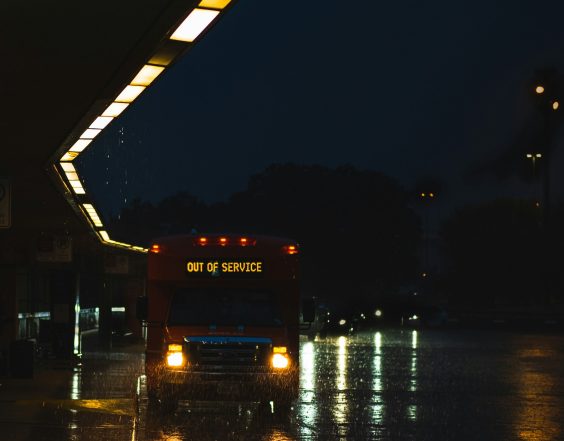 Source: National Transit Database.
Source: National Transit Database.There are plenty of eye-popping statistics in the MTA's new proof-of-payment study [PDF]: 9.5 percent of Muni riders don't have valid proof-of-payment, costing the agency $19 million in missed revenue annually. The fare-evasion rate is even higher among riders who illegally board buses through the back door: 55 percent don't have valid proof-of-payment. As the MTA looks to address the problem with back door boarding, staff has its eyes on another illuminating statistic in the report: on average, about 70 customers board any given MTA bus each hour - more than any other large transit system in the nation.
"It shows that Muni is an incredibly productive system, but a key source to maintaining that productivity is to maintain quick, efficient service," said Julie Kirschbaum, manager of Muni's Transit Effectiveness Project. The study notes that an "immediate shift to exclusive front-door
boarding could result in longer times at stops and slower travel
times." In dealing with the high percentage of back door boarders who evade fares, said Kirschbaum, "we want to make sure we do it in a way that doesn't slow down our vehicles."
One potential solution the MTA is considering is to make back door boarding on buses and the F-line historic streetcar legal, and enforce fare requirements by implementing a proof-of-payment system similar to the one in place on Muni's light rail vehicles. Other than at underground Muni Metro stations, Muni customers can board LRVs without proof-of-payment, and fare payment is enforced through random checks by transit fare inspectors. That significantly reduces dwell time. The fare evasion rate on trains is less than five percent, and generally remains low even outside the subway.
 Image: SFMTA proof-of-payment study.
Image: SFMTA proof-of-payment study.Kirschbaum points out that a proof-of-payment system was identified
as a priority in the Transit Effectiveness Project, so the MTA is
already working on figuring out the details of how such a system would
work. All-door boarding was endorsed in the TEP because it speeds up
vehicles and "better-distributes customers across the vehicle," said
Kirschbaum. "You have the potential to leave more space for our more
vulnerable passengers, like seniors and people with disabilities" in
the front.
Switching
to a proof-of-payment system on buses and allowing customers with valid
fare media to board through the back doors of buses could speed Muni
up, but there are several challenges to implementing such a system,
said MTA spokesperson Judson True. "Right now, we have fare inspectors
facilitating rear-door boarding at certain key locations, but that
isn't a scalable approach."
"The design of the bus creates new and interesting challenges to doing proof-of-payment, but it's certainly challenges that we could overcome," said Kirschbaum.
For one, there are far more bus lines than rail lines, so enforcement would be much more dispersed, and the MTA would need to ensure inspectors are deployed effectively. TransLink cards also pose a problem: though they can't be counterfeited like paper fare media, they're slower to inspect since they must be scanned using a portable reader.
"I think we do have a lot of lessons to learn related to doing proof-of-payment on the bus system. We can look to European models that have successfully rolled out proof-of-payment on the bus system, and carry heavy numbers of riders, like we do," said Kirschbaum.
One closer-to-home example the MTA can look to is Ottawa's transit system, which allows rear-door boarding on its articulated buses for riders with valid proof-of-payment. Like Muni's LRVs, customers board in front if they still need to pay their fare, and everyone must be able to present valid proof-of-payment to fare inspectors at any time.
For now, the MTA is weighing how best it can capture more of the fare revenue it's owed, while not paying for that gain with more delay to buses. "We're trying to take a nuanced look at a complicated problem," said True. "I think a lot of people think it's an easy question, and it's not."





